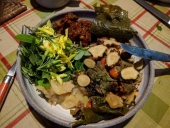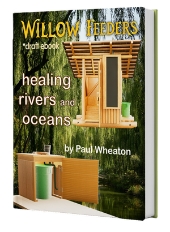

 3
3




Joylynn Hardesty wrote:
..And look who is peeping out today!
How Permies works: https://permies.com/wiki/34193/permies-works-links-threads
My projects on Skye: The tree field, Growing and landracing, perennial polycultures, "Don't dream it - be it! "

 6
6




 7
7




Christopher Weeks wrote:I’ve been feeling overwhelmed with other stuff and so I put off catching up on this thread. But now I’m back. What is it I’m supposed to be testing with regard to light/dark chitting? I don’t normally do anything special to get my tubers ready. I pull them out of the dark cellar, they have white sprouts, I plant them, they grow. I just pulled a couple handfuls out put them in a cardboard box and moved them into a plant tent with very bright light. All I need to do is test my normal white sprouts against sprouts that have been allowed to green, then I think I’m good. I’ll plant in a month or so. But if I should be doing something else, or additional, someone, please let me know. :-)
ETA: I'll grow the ones now under lights near a similar batch of tubers from the cellar, using all the same materials and methods, and hopefully any differences will be readily evident.












 5
5




How Permies works: https://permies.com/wiki/34193/permies-works-links-threads
My projects on Skye: The tree field, Growing and landracing, perennial polycultures, "Don't dream it - be it! "
 8
8




 4
4




Nancy wrote:What sort of day time temperatures were you getting in the last half of March?
'What we do now echoes in eternity.' Marcus Aurelius
How Permies Works Dr. Redhawk's Epic Soil Series












 4
4




Joylynn Hardesty wrote:
Nancy wrote:What sort of day time temperatures were you getting in the last half of March?
High temp were ranging between 60 to a couple scattered days in the low 70s. Then today's high was. 50, going down to 37 tonight. Ick.
 (15-25 degrees Celsius) and now back to what I've got currently (about 5-10 degrees Celsius) I expect the potatoes will be fine, as long as it stays above freezing, although growth will presumably be slower as well.
(15-25 degrees Celsius) and now back to what I've got currently (about 5-10 degrees Celsius) I expect the potatoes will be fine, as long as it stays above freezing, although growth will presumably be slower as well.
How Permies works: https://permies.com/wiki/34193/permies-works-links-threads
My projects on Skye: The tree field, Growing and landracing, perennial polycultures, "Don't dream it - be it! "












 6
6




Maieshe Ljin wrote:One experiment of mine is underway. Here is a Papa Chonca that I have buried in sand, and plan to grow the shoots to the point of self sufficiency and then take them off as cuttings.
How Permies works: https://permies.com/wiki/34193/permies-works-links-threads
My projects on Skye: The tree field, Growing and landracing, perennial polycultures, "Don't dream it - be it! "
 7
7




$10.00 is a donation. $1,000 is an investment, $1,000,000 is a purchase.












 3
3




Nancy Reading wrote:
Joylynn Hardesty wrote:High temp were ranging between 60 to a couple scattered days in the low 70s. Then today's high was. 50, going down to 37 tonight. Ick.
OK that's like my midsummer temperatures(15-25 degrees Celsius) and now back to what I've got currently (about 5-10 degrees Celsius)












 6
6




It's 50F/10C right at this moment. During a normal winter -- where we can reach -40 but don't usually, it can almost reach the freezing point. There is only a thin wooden door between that closet and our basement living space, so it really depends on the cold of the surrounding soil. Insulating the door is on our project list, but so is digging/building a better cellar.Nancy Reading wrote:If I were to guess, I'm thinking your cellar is probably a bit on the warm side for potato storage.
 6
6




Nancy Reading wrote:
Maieshe Ljin wrote:One experiment of mine is underway. Here is a Papa Chonca that I have buried in sand, and plan to grow the shoots to the point of self sufficiency and then take them off as cuttings.
That's very interesting Maieshe! I'd be pleased to see the results of this!
I've read that using the eyes or the sprouts is a way of reducing the amount of virus in the potatoes. That's one reason we are told not to save our own potatoes year to year - because the viruses can build up over time and affect the yield and quality. Are you going to compare the sprouts to potatoes grown in the normal way from seed potatoes? It would be interesting (if you were able) to continue sprout and seed potato regrowth, keeping the harvest separate for a few years, to see whether and when you notice an effect.
 10
10




 5
5












 3
3




'What we do now echoes in eternity.' Marcus Aurelius
How Permies Works Dr. Redhawk's Epic Soil Series
 5
5




Recommended reading material: Romans 10:9












 4
4




How Permies works: https://permies.com/wiki/34193/permies-works-links-threads
My projects on Skye: The tree field, Growing and landracing, perennial polycultures, "Don't dream it - be it! "












 4
4




Tamara Carroll wrote:When I plant, I dig a long trench and line it with pine needles, put in the sprouted potatoes, cut into sections that all have a sprout or three, and then cover with soil. The trench with pine needle thing is from Martha Stewart, and has worked well for me.
How Permies works: https://permies.com/wiki/34193/permies-works-links-threads
My projects on Skye: The tree field, Growing and landracing, perennial polycultures, "Don't dream it - be it! "
 3
3




Recommended reading material: Romans 10:9












 3
3
















 7
7




 3
3
















 4
4




 4
4




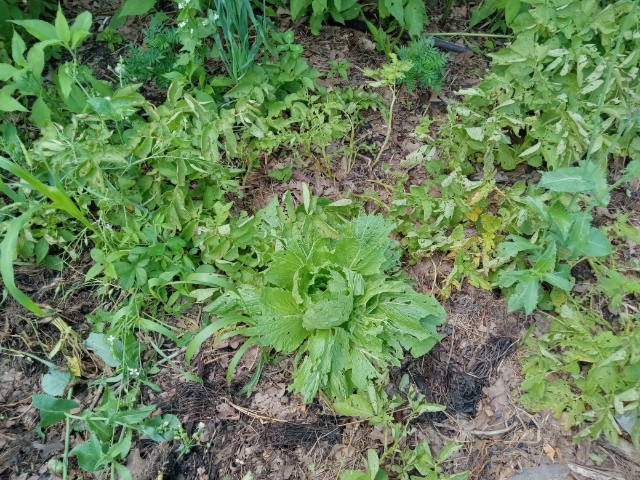
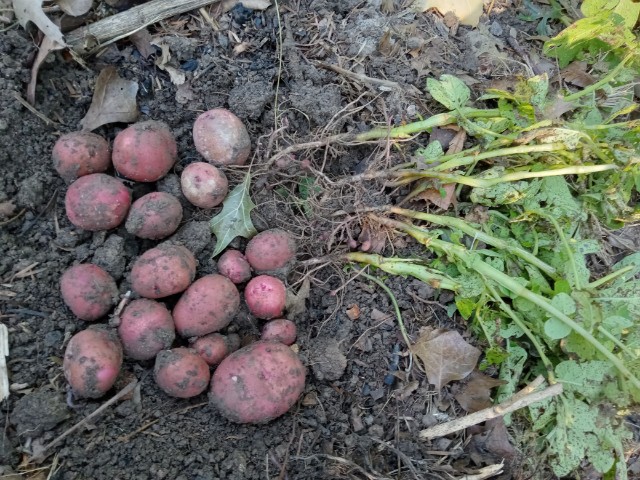
Zone 6, 45 inches precipitation, hard clay soil




 3
3




Nancy Reading wrote:
Ac Baker wrote:The first early purple potatoes .. 'Vitanoire'.
Do you fancy chitting one batch in light and dark to see if it makes a difference to the yield?
--
"Whitewashed Hope: A Message from 10+ Indigenous Leaders and Organizations"
https://www.culturalsurvival.org/news/whitewashed-hope-message-10-indigenous-leaders-and-organizations
 4
4




They say time's the great healer, and that's true. It's just not a very good anaesthetist, is the problem,
Whose lunar deity is not male is destined to be dominated by his wife. -- Old Hindu proverb
 3
3




Where my chicks have roamed no grass grows!












 3
3




How Permies works: https://permies.com/wiki/34193/permies-works-links-threads
My projects on Skye: The tree field, Growing and landracing, perennial polycultures, "Don't dream it - be it! "
 3
3




They say time's the great healer, and that's true. It's just not a very good anaesthetist, is the problem,
Whose lunar deity is not male is destined to be dominated by his wife. -- Old Hindu proverb
 5
5
















 6
6




| treatment | Pink fir apple (main) | Skye Blue (early main) | shop white early |
|---|---|---|---|
| dark | 7 | 18 | 2.5 |
| fridge | 11.5 | 49.5 | 10 |
| light | 7.8 | 14 | 13 |
How Permies works: https://permies.com/wiki/34193/permies-works-links-threads
My projects on Skye: The tree field, Growing and landracing, perennial polycultures, "Don't dream it - be it! "
 5
5




 5
5




Nancy Reading wrote: Some observations: My early black variety (vitanoire) doesn't like Skye much. I got a poor yeild last year. This summer has been worse - cooler and wetter, slug heaven! Only one of the tubers survived to a harvest - so I didn't include these below. They are beautiful tubers though!
Nancy Reading wrote:
I'm very happy with my "Skye blue" potato and it seems to like my growing conditions. I don't know if it has a true variety name, but I can see why it has been selected to grow locally. It has a nice potato flavour and is quite floury in texture, the colouration makes it interesting too.
--
"Whitewashed Hope: A Message from 10+ Indigenous Leaders and Organizations"
https://www.culturalsurvival.org/news/whitewashed-hope-message-10-indigenous-leaders-and-organizations
 5
5




In modern times the only right way forward is to come back to nature.












 5
5




Ac Baker wrote:I wonder if they are related to the similar-seeming Viking Blue / Purple Viking?
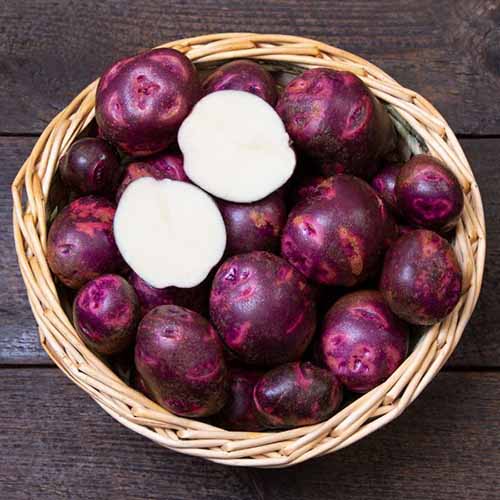
See Hes wrote:The biggest challenge in trhe potato world is to grow a heat resistant potatoe.
How Permies works: https://permies.com/wiki/34193/permies-works-links-threads
My projects on Skye: The tree field, Growing and landracing, perennial polycultures, "Don't dream it - be it! "












 4
4












 5
5




![Filename: thumbnail.jpg
Description: [Thumbnail for thumbnail.jpg]](/t/236026/a/250990/thumbnail.jpg)
I choose...to be the best me I can be, to be the strongest me I can be, to learn the most I can. I don't know what comes next. But I'm gonna go into it balls to the walls, flames in my hair, and full speed ahead.












 5
5




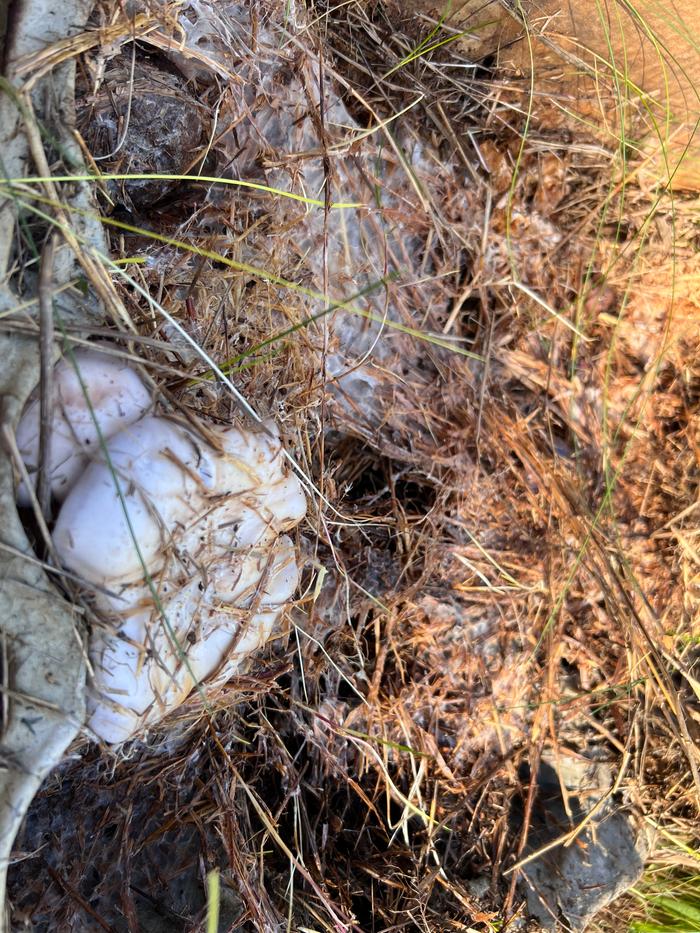












 7
7




Christopher Weeks wrote:I just emptied out the boxes of hay in which I was trying to grow potatoes. They were quite unproductive, so in that sense the experiment was a failure. But I did observe some interesting stuff.












 6
6





How Permies works: https://permies.com/wiki/34193/permies-works-links-threads
My projects on Skye: The tree field, Growing and landracing, perennial polycultures, "Don't dream it - be it! "

|
The government thinks you are too stupid to make your own lightbulb choices. But this tiny ad thinks you are smart:
The new gardening playing cards kickstarter is now live!
https://www.kickstarter.com/projects/paulwheaton/garden-cards
|

